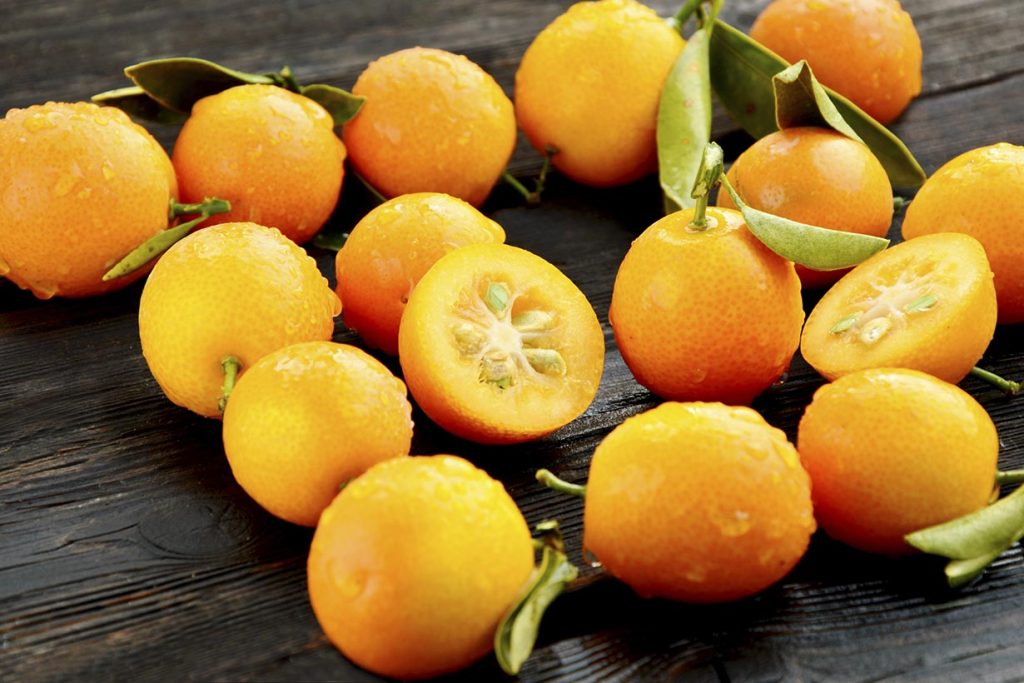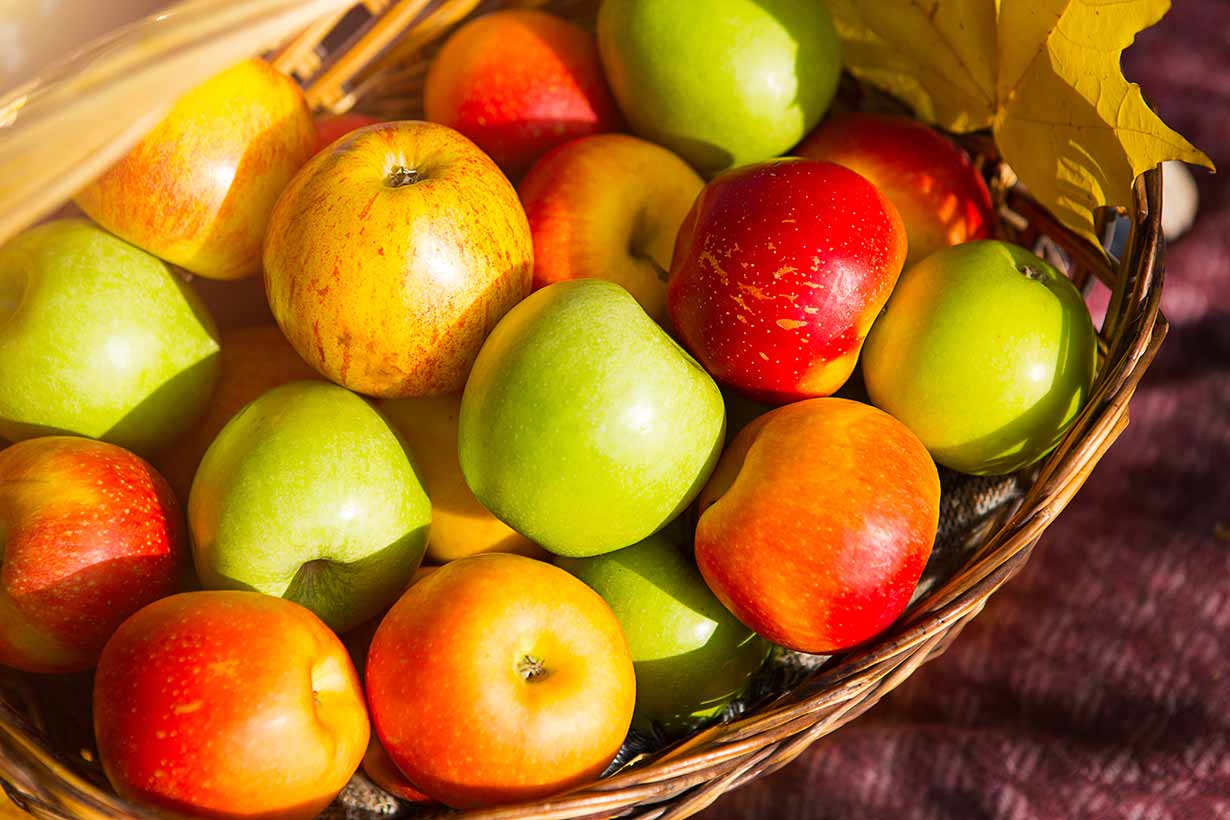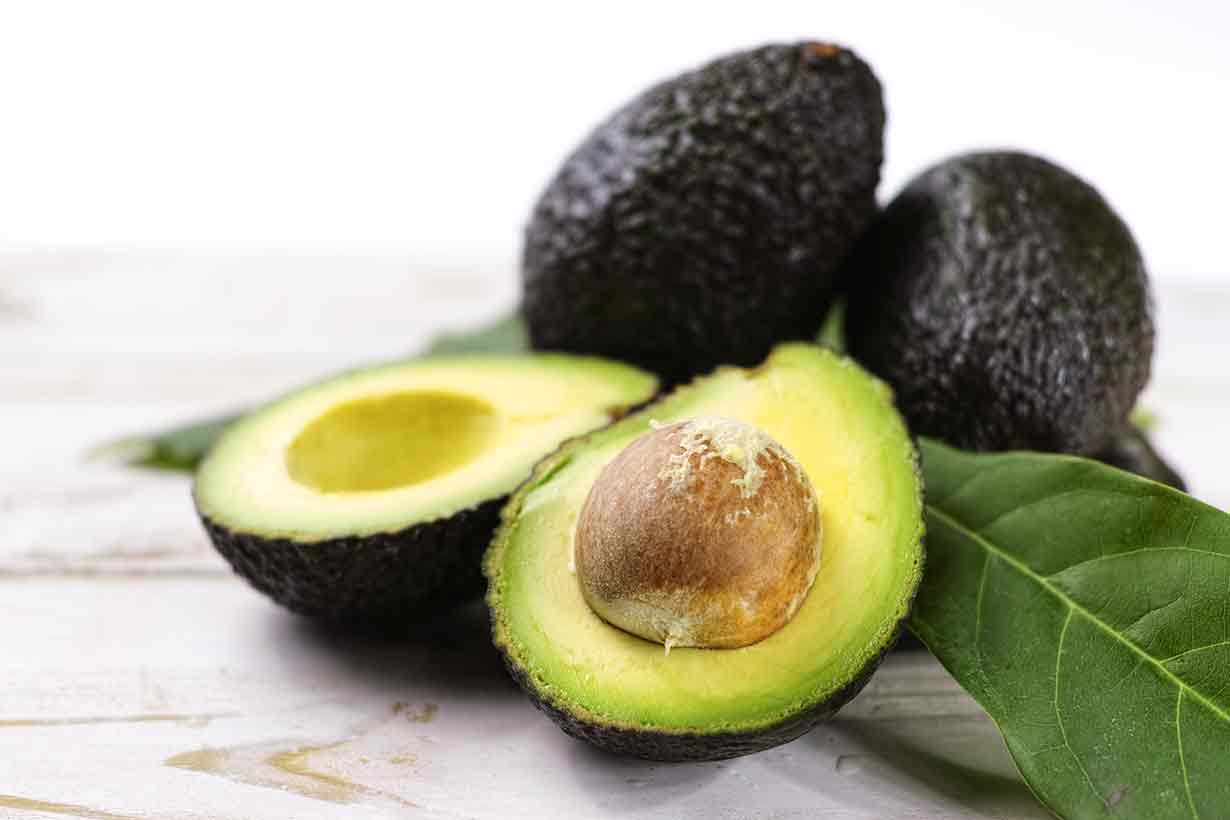Kumquats are small citrus fruits that look like baby oranges.
However, this is where most of the similarities end, and this fruit has some unique properties compared to other citrus fruits.
This article provides a complete nutritional guide to kumquats, examining their key characteristics, nutrient profile, potential benefits, and more.
Table of contents
What Is a Kumquat?

Kumquats are small fruits belonging to the citrus family, which includes grapefruit, lemon, lime, and pomelo.
The name ‘kumquat’ is of Chinese origin, and it has the literal meaning of “gold tangerine” (1).
The fruit is native to China, Japan, Korea, and Taiwan, but it has been cultivated around the world for centuries. For example, the fruit has been cultivated in the United Kingdom since 1846, with its North American introduction shortly following (2).
Appearance and Taste
While kumquats look very similar to the common orange, they are significantly smaller, and they are somewhat oval in shape.
All in all, their size is more comparable to a large cherry tomato, and kumquats rarely have a diameter or length beyond 2 inches (1).
Kumquats have a golden orange color when fully ripe, but they are green in their unripe state. At this point, they have an extremely bitter flavor.
When fully ripe, the kumquat is still somewhat tart—it has more acidity and lacks the characteristic sweetness of oranges, which is a key difference between the two.
Kumquats contain seeds, which are edible, but they have a bitter taste.
Key point: Kumquats are small citrus fruits that are similar in size to a cherry tomato.
Nutritional Profile of Kumquat
A typical kumquat weighs about 19 grams and provides 19 calories.
According to USDA data, here are the nutritional values for 100 grams of kumquats, which is approximately five kumquats (3).
Calories and Macronutrients
- Calories: 71 kcal
- Carbohydrates: 15.9 g (6% of the daily value (DV))
- Fiber: 6.5 g (23% DV)
- Sugars: 9.36 g
- Fat: 0.86 g (1% DV)
- Saturated fat: 0.10 g (<1% DV)
- Monounsaturated fat: 0.15 g
- Polyunsaturated fat: 0.17 g
- Omega-3: 0.05 g
- Omega-6: 0.12 g
- Protein: 1.88 g (4% DV)
- Cholesterol: 0 mg (0% DV)
Note: Recommended percentage daily values (% DV) are based on a 2000-calorie diet.
Vitamins
- Vitamin C: 43.9 mg (49% DV)
- Riboflavin (B2): 0.09 mg (7% DV)
- Pantothenic acid (B5): 0.21 mg (4% DV)
- Folate, DFE: 17 mcg (4% DV)
- Thiamin (B1): 0.04 mg (3% DV)
- Niacin (B3): 0.43 mg (3% DV)
- Vitamin B6: 0.04 mg (2% DV)
- Choline: 8.4 mg (2% DV)
- Vitamin A, RAE: 15 mcg (2% DV)
- Vitamin E: 0.15 mg (1% DV)
- Vitamin K: 0 mcg (0% DV)
- Vitamin B12: 0 mcg (0% DV)
- Vitamin D: 0 mcg (0% DV)
Minerals
- Copper: 0.10 mg (11% DV)
- Manganese: 0.14 mg (6% DV)
- Calcium: 62 mg (5% DV)
- Iron: 0.86 mg (5% DV)
- Magnesium: 20 mg (5% DV)
- Potassium: 186 mg (4% DV)
- Phosphorus: 19 mg (2% DV)
- Zinc: 0.17 mg (2% DV)
- Sodium: 10 mg (<1% DV)
- Selenium: 0 mcg (0% DV)
Key point: Kumquats are primarily a source of carbohydrates and fiber. They also provide good amounts of several essential vitamins and minerals, being particularly high in vitamin C.
Potential Benefits of Kumquat Fruit
Kumquats have a range of potential benefits, and these mostly relate to their fiber, vitamin C, and polyphenol content.
Here is a summary.
1. Kumquats Are High in Vitamin C
Per 100-gram serving, kumquats provide 49% of the recommended daily value for vitamin C (3).
In other words, just five kumquats offer approximately half of the daily value.
Vitamin C is an essential vitamin that has several important functions within the body, such as:
- Antioxidant function: Helping to protect the body’s cells against oxidative damage from free radicals (4).
- Enhancing iron absorption: Vitamin C works synergistically with non-heme iron—the type of iron found in plants—enhancing its uptake from plant-based foods (5).
- Immune support: Maintaining a sufficient intake of vitamin C helps to strengthen the immune system (6).
Key point: Adding 100 grams of kumquats to the diet is a simple way to get approximately half of daily vitamin C needs.
2. Kumquats Are High in Fiber
For a citrus fruit, kumquats are very high in dietary fiber, and this can be attributed to the fiber-rich peel of kumquat (7).
Since we consume the kumquat fruit whole—including peel—it offers more fiber than other citrus fruits, and it is one of the highest-fiber fruit options.
For instance, if we look at the fiber content of a typical orange, we can see that it only contains around 2.2 grams of fiber per 100 grams (8).
By comparison, kumquats provide 6.5 grams of fiber per 100 grams, which is nearly 200% more fiber by weight (3).
Fiber is an important type of carbohydrate that can confer many potential benefits. Some of these include its ability to (9, 10, 11):
- Bind and eliminate toxins in the gut.
- Lower the blood sugar response to foods.
- Lower LDL cholesterol.
- Help promote digestion and regular stool movements.
Due to their high fiber and relatively low sugar content, kumquats should have a low glycemic index. This would mean they can be expected to have a small impact on blood sugar levels. However, there are currently no reliable references for their glycemic index based on a human study.
To learn more about the fiber content of different fruits, please refer to this guide:
The Top 25 Fruits High In Fiber
Key point: Unlike other citrus fruit, kumquats are consumed whole—including their peel—and provide significant amounts of fiber.
3. Kumquats Are a Rich Source of Polyphenols
Kumquats contain polyphenols, a type of phytonutrient—plant chemical—found in plant-based foods.
Dietary patterns rich in these compounds are linked to a lower risk of chronic disease and all-cause mortality in the longer term (12, 13).
Some polyphenol groups in the fruit include (14):
- Chalcones
- Flavonoids
- Phenolic Acids
Among the specific polyphenols in kumquats, the fruit is particularly rich in naringin and narirutin (15, 16).
Additionally, tests show that kumquat peel is exceptionally high in polyphenols. Since we eat the peel, it would be fair to say this is potentially a beneficial aspect of kumquat in comparison to other citrus fruits (17).
Key point: Kumquats are rich in potentially health-protective polyphenols, such as naringin and narirutin.
How Do Kumquats Compare Nutritionally To Other Citrus Fruits?
With most citrus fruits—such as grapefruit, lemon, lime, and orange—we don’t consume their peel.
But just how different does this make kumquat fruit from these other citrus fruits nutritionally?
Nutrient Comparison
In the table below, you can see the total calorie, carbohydrate, fiber, and sugar content of grapefruit, kumquat, lemon, lime, and oranges per 100 grams, as typically consumed (3, 8, 18, 19, 20):
| Fruit | Calories | Carbs | Fiber | Sugar |
|---|---|---|---|---|
| Grapefruit | 42 kcal | 10.66 g | 1.6 g | 6.89 g |
| Kumquat | 71 kcal | 15.9 g | 6.5 g | 9.36 g |
| Lemon | 29 kcal | 9.32 g | 2.8 g | 2.5 g |
| Lime | 30 kcal | 10.54 g | 2.8 g | 1.69 g |
| Orange | 50 kcal | 11.78 g | 2.2 g | 8.96 g |
As the data shows, kumquats contain more calories, fiber, and sugar than other citrus fruits.
Kumquats have a significantly higher total fiber content than the other fruits. They also have a higher fiber-to-sugar ratio than grapefruit and oranges.
Water Content
Compared to kumquats, most other citrus fruits have a higher water content.
Here’s the water content of each of the five citrus fruit options—as typically consumed—according to USDA data (3, 8, 18, 19, 20):
- Grapefruit: 88% water by weight
- Kumquat: 81% water by weight
- Lemon: 89% water by weight
- Lime: 88% water by weight
- Orange: 87% water by weight
This lower water content is simply because kumquats have more peel and less flesh per edible 100 grams. In this regard, other citrus options appear better than kumquat specifically for hydration.
Key point: Compared to other popular citrus fruit varieties, kumquat has a significantly higher fiber content. However, it has a lower water content. These differences can mostly be explained by consumption of kumquat’s peel.
Dried Kumquat Products
As well as being available in their fresh form, it is also possible to buy dried kumquats.
Dried kumquats are dehydrated through a low-heat cooking process.
Since they don’t have the water content of fresh kumquats, they have a much sweeter and stronger flavor, as well as a chewier texture.
While dried kumquats should contain approximately the same nutrients as fresh kumquats per fruit, their vitamin C content may have fallen. This is because both heat and the drying process itself can degrade vitamin C levels (21, 22).
Per 100 grams, dried kumquats will understandably be much higher in nutrients—and total calories.
Note: Some dried or “candied” kumquat products may contain significant amounts of added sugar. As always, it is important to check ingredient labels.
Do Kumquats Have Any Drawbacks?
While allergies to citrus fruits like kumquats are very rare, they do exist (23). Anyone who suspects an allergy should discuss this with their medical team.
That said, the main negative point about kumquats is that they can be hard to find, resulting in higher prices. This is because they only grow in certain areas and aren’t produced in the same numbers as more common citrus fruits.
As a result, they are more expensive than other citrus fruits, with further transportation—and potentially import—costs.
Summary
Kumquats are certainly unique in appearance, and they are enjoyable to eat in just one bite.
They also have a lot to offer nutritionally:
- High levels of dietary fiber.
- Significant vitamin C content.
- A good source of phytonutrients—particularly the polyphenols naringin and narirutin.
With these beneficial properties, kumquats can make a good contribution to a healthy dietary pattern.
If you haven’t tried them before, then it might be worth trying some kumquats.









Can I make a marmalade with kumquats?
I don’t see why not! Should be just the same as making one from oranges or lemons, and it looks like there are a few recipes online too.